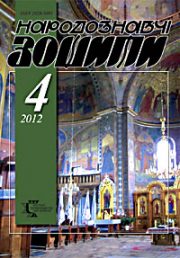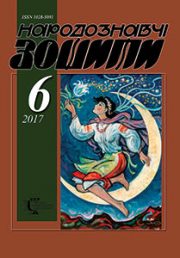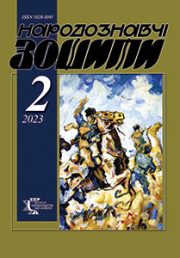The Ethnology Notebooks. 2017, 2 (134), 427—433
UDK 746.4(520) + 951(520)
DOI https://doi.org/10.15407/nz2017.02.427
JAPANESE SENNІNBARI: NOTES TO ETHNOGRAPHY OF WAR
Rybalko Svitlana, PHD in Art Studies, professor,
Head of the Department of Art, Literary Studies and Linguistics
of the Kharkiv State Academy of Culture
Bursatskyi uzviz, 4, Kharkiv, 61057, Ukraine,
Contacts: Tel. (057) 7311385; e-mail: rector@ic.ac.kharkov.ua
Abstract. The article deals with Japanese amulets, socalled senninbari, in the context of the history of everyday life during the World War II, highlights the history and semantics of senninbari, a reflection of the protective belts making tradition in the visual arts. The article draws upon the author’s expeditions to Japan in 2005—2013, family archives, museums, and private collections of Japan, Europe, and USA.
Keywords: World War II, SinoJapanese war, ethnography of war, senninbari, art of Japan.
Received 26.01.2017
REFERENCES
Mak-Klejn, Dzh.L. (2007). Japonija: ot segunata Tokugava — v XXІ vek. Moskva: Astrel’ [in Russian].
Meshherjakov, A.N. (2006). Imperator Mjejdzi i ego Japonija. Moskva: Natalis; Ripol Klassik [in Russian].
Nakamura Kiharu & Gar’kavyj, A. (per. s nem.). (2002). Ispoved’ Gejshi. Moskva: JeKSMO [in Russian].
Frederik, L. (2007). Povsednevnaja zhizn’ Japonii v jepohu Mjejdzi. Moskva: Molodaja gvardija [in Russian].
Bortner, M. (2008). Imperial Japanese Good lucl Flags and One-Thousand Stitch Belts [in English].
Epokha Tajsh’o (1986). V 3 t. (Vol. 3). Tokio (大正時代(全三巻)」 東京 一九八六年。). [in Japan].
Khadzhime Mijoshi. (1997). Yapons’kyj plakat [v periody] Mejdzhi, Tajsh’o i Sh’oova. Kioto (京都书院, 1997 「明治・大正・昭和 日本のホスタ」 ー 三好一). [in Japan].







